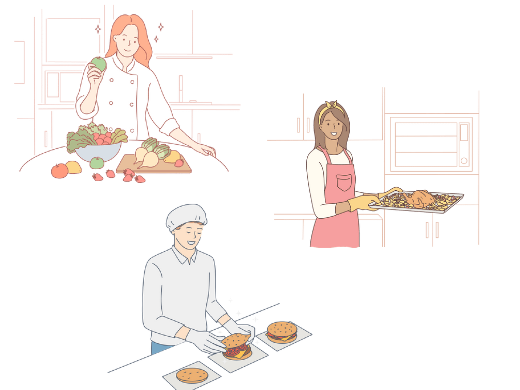Demystifying the math of culinary conversions (part 2!)

In our last blog post, we went over a very simple conversion from tablespoons to teaspoons. Are you ready for a more challenging example?
Suppose you want to have a smoothie on the menu. You have a recipe that makes TWO servings. The recipe calls for 1 cup of milk. How many cups of milk will you need to make 200 smoothies?
If 1 cup of milk makes two servings, you'll need 1/2 cup of milk for ONE serving. Multiply that by 200 and you get 100 cups of milk.
But it would be impractical to measure 100 cups when making a large batch. Let's convert that to quarts.
Step 1. Identify your conversion factor.
There are 4 cups in 1 quart. If you don't have that memorized, you can always look it up on your phone or refer to a chart.
Step 2. Set up your dimensional analysis grid.
A. First, write down the number you are starting with. That's 100 cups.
B. Underline the number and extend it out, then add a vertical line so that you have a grid.
____ 100 cups_ | ________________
C. Add the conversion factor to the grid. When we have a unit of measurement on the top and also on the bottom, they cancel out. We want the cups measurement to cancel out and leave us with quarts. Let's put the cups part of the conversion factor on the bottom.
____ 100 cups_ | _ 1 quart _____
4 cups
But wait - you remember you have gallon buckets you can use to blend the smoothie ingredients.
D. Let's add another conversion factor to further convert the milk measurement to gallons.
____ 100 cups_ | _ 1 quart __ | __1 gallon
4 cups | 4 quarts
Step 3. Do the math! Multiply the numbers on top and multiply the numbers on the bottom. Then reduce the fraction.
Top: (100 x 1 x 1) = 100
Bottom: (4 x 4) = 16
100/16 = 6.25
Your buckets only hold about 1 gallon each. If you make 6 batches of smoothies, you'll need 1.04167 gallons of milk per batch. (6.25 gallons/6 batches = 1.04167 gallons per batch)
It would be difficult to accurately measure that small amount (0.04167 gallons) by sight. Let's convert that back to cups.
____ 0.04167 gallons_ | _ 4 quarts __ | __4 cups
1 gallon | 1 quart
Top: (0.04167 x 4 x 4) = 0.667
Bottom: (1 x 1) = 1
0.667/1 = 0.667 or 2/3
We can measure 2/3 cup of milk with a liquid measuring cup and pour that small amount into the bucket with the remaining gallon of milk.


